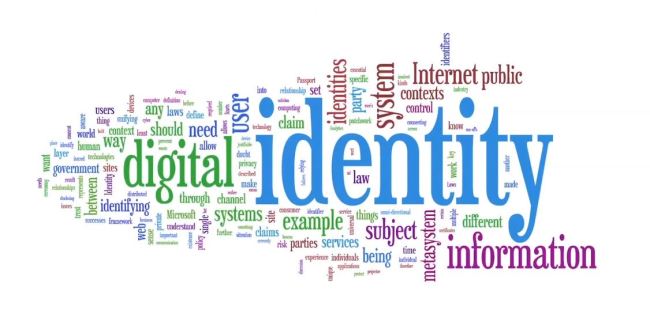
My Power Point Presentation Slide Deck on Google Docs – Digital Identity PP Presentation.
Let’s define Digital Identity. It is a data that uniquely describes a person and contains information about the subject’s relationships. The social identity that an internet user establishes in cyberspace is referred to as online identity.
Those generations that grew up without internet had a chance to establish their physical identity before their online identity. Children growing up with Internet today develop their physical identity simultaneously with the digital. How does that impact younger generations?
The narrow focus of today’s presentation is the Teen Girl Identity on Facebook. The cyber culture promotes relentless display of self via images and sound bites before the self has had a chance to fully form. The digital identity of teens is influenced by many external factors.
In the Margaret Cooper and Kristina Dzara essay: The Facebook Revolution: LGBT Identity and Activism, authors analyze several stages of public identity development: 1) identity construction, 2) identity management and negotiation; 3) collective identity, activism and the construction of issues as social problems.
Social networking sites and Facebook in particular gives our online persona a sense of uniqueness. We are a center of the universe as everything on our profile is centered around us, our lives, our views and our perceptions of ourselves.
In 1995, Buhrmester and Prager developed a model of self-disclosure in which adolescents can achieve “identity development” and “intimacy development” both through the process of revealing their thoughts and feelings to their peers.
What is interesting about self-revelation on social networks? The question comes up how genuine is this self-revelation. Do we always speak what we really feel or do we hold back? Do we alter our revelation based on the perceived acceptance or unacceptance?
Here lies the major difference between speaking your mind on Facebook versus the diary. When you are writing in a diary no one else will ever see, you can write whatever you want at whatever length you want. You can explore your own thoughts and feelings through your writing.
When tweens and teenagers write and post photos online, they are seeking to please, entertain, impress or amuse their friends or opposite sex. One danger of online blogs and social networking sites is that a teenager may not be expressing what she really feels.
She might not even be aware of the difference. She may not realize that what she says she is feeling isn’t what she actually is feeling. She subtly adjusts what she is writing to suit what she thinks her friends want to read. After a while, she may gradually become a girl she is pretending to be.
Many girls are well aware that the persona they are presenting on their Facebook page is not genuine. Authenticity is not valued on Facebook. It’s not about being authentic, say teens, it is about being cool. Girls list favorite movies, music, books not based on their own preferences but on what they consider would get approval.
Girls know that if they want their social networking site to be popular, then the site needs to include lots of photos. Funny photos are good; sexy and suggestive photos are better, as long as the photos aren’t skanky. It is all about projecting the right image: cool, hip, ironic.
She is creating a mask, she is marketing a brand, she is performing: putting on a show to amuse others. Girls that pretend to be obsessed with Clary and Jace because it is cute and amusing to portray such a persona may find themselves turning into girls they pretend to be.
According to Bauerlein, “Instead of opening adolescents and young adults to worldly realities, acquainting them with the global village, digital communications have opened them to one another – which is to say have enclosed them in a parochial cosmos of youth matters and concerns”.
While working so hard on creating online identity across multiple social networking sites and blogs, teen girls adjusting their views to please others. Staying hip, on top of the latest whim of adolescent fashion, requires constant vigilance and tremendous time investment. But it achieves nothing lasting.
“We have entered the stage of micro-celebrity” according to Clive Thompson. When real celebrities go to a party, they know that somebody may take their photo. And that photo may appear within minutes in the blogosphere. They know they must always be on guard about how they look and what they say.
The girls today are like real celebrities and politicians. In essence, every young person in the cyberbubble has become, in the literal sense, a public figure. And so they are adopting the skills that celebrities learn in order not to go crazy and use caution in developing their online persona.
Watch what you say. Be witty – but don’t offend your friends. Be cute – but not skanky. Be spontaneous – but not stupid. And if you make a single mistake, it could go online and haunt you forever. The strain of living in front of the crowd constantly is what causes real celebrities to fall apart.
Teenage girls not only learn to make-sure they are always dressed and made-up for close-up pictures, they have to manage their online presence without having a professional PR expert to design their logos, fonts, and photoshop images. Protecting their digital identity becomes another time-consuming task.
While corporatizing their image and making their brand slick and cool, many teens are confused about who they really are.

